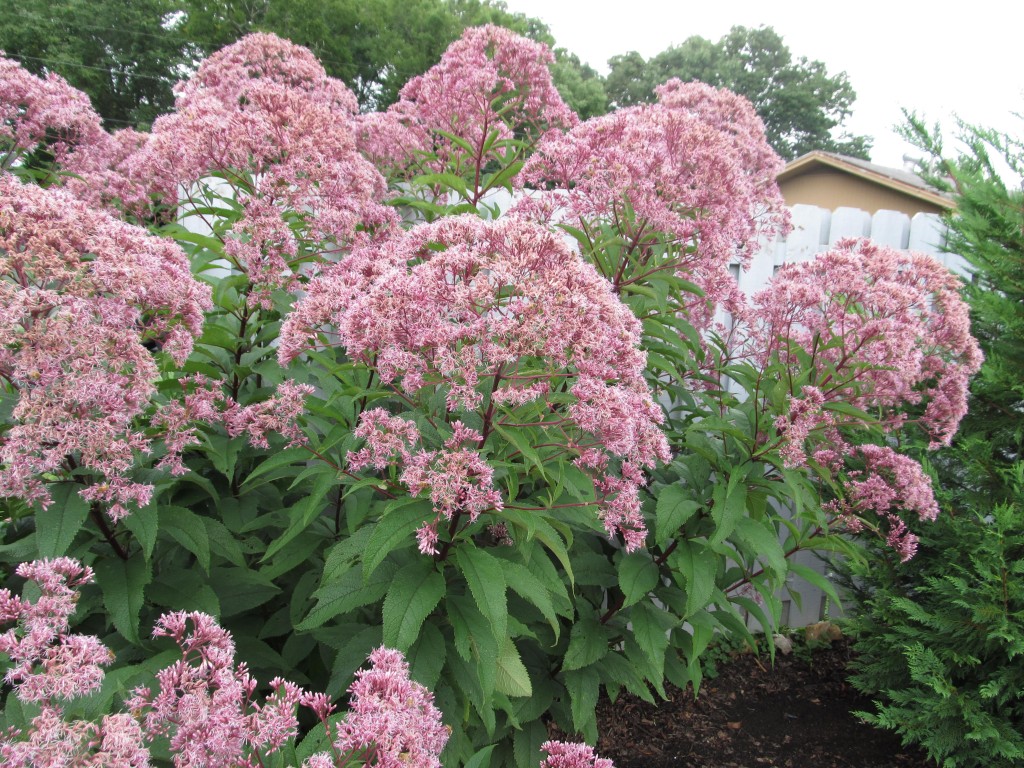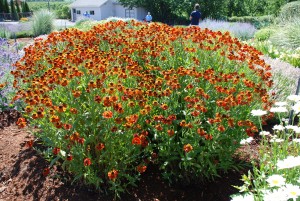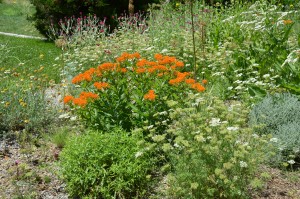Some plants deserve more respect. Over the years several U.S. native species have been tamed or domesticated. Yet, they retain their common name “weed”. Four popular former “weeds” are:
- butterfly weed (Asclepias tuberosa)
- ironweed (Vernonia lettermannii ‘Iron Butterfly’),
- sneezeweed (Helenium autumnale), and
- Joe-Pye weed (Eupatorium spp.).
Butterfly weed (Asclepias tuberosa) is a tuberous rooted long-lived perennial found in dry/rocky open woods, glades, prairies, fields and roadsides across the Eastern and Southern U.S. Plants are slow to establish and may take 2-3 years to produce flowers. Mature plants may freely self-seed in the landscape if seed pods are not removed prior to splitting open. Butterfly weed does not transplant well due to its deep taproot, and is probably best left undisturbed. It typically grows in a clump to 1-3 feet tall and features clusters (umbels) of bright orange to yellow-orange flowers atop upright to reclining, hairy stems with narrow, lance-shaped leaves.
Ironweed (Vernonia lettermannii) is a compact, well-branched and vigorous plant. In late summer its vivid purple flowers are covered with butterflies and other pollinators. Ironweed is found growing in poor rocky soils, tolerates long periods of submersion (flooding), yet it is highly tolerant of hot dry sites. Cultivar ‘Iron Butterfly’ is a low mounding perennial form with narrow fine textured foliage. Plants are 2-3 feet tall and equal in spread. Sturdy plants are strongly anchored by a sturdy taproot. Branch terminals are covered by small clusters of deep purple disc florets in late summer.
Sneezeweed (Helenium autumnale) is an erect, clump-forming perennial which typically grows 2-3 feet tall (sometimes to 4 feet) on sturdy stems. It has a lengthy bloom season from summer into to early fall. Daisy-like 2 inch wide flowers have wedge-shaped, coppery-red (or yellow) rays that are notched at the tip and prominent, dark dome-like center disks. Leading cultivars are ‘Moerheim Beauty’.
All four perennials are favorite nectar plant of bees and butterflies, particularly the Monarch butterfly larvae. They prefer sunny sites with average to dry soils. Grow in average, medium to wet, well-drained soil in full sun. Over-fertilization may force plants to grow too tall. Although not required, three species, not butterfly weed (Asclepias) may be cut back in early July (at least 6 weeks before normal flowering) to reduce plant height and encourage branching, thus increasing bloom count, healthier foliage, and less need for support. Remove spent flowers to stimulate additional bloom. Divide clumps every three years to maintain vigor. They are disease and pest resistant and is not bothered by deer or other herbivores.




 Posted in
Posted in 
